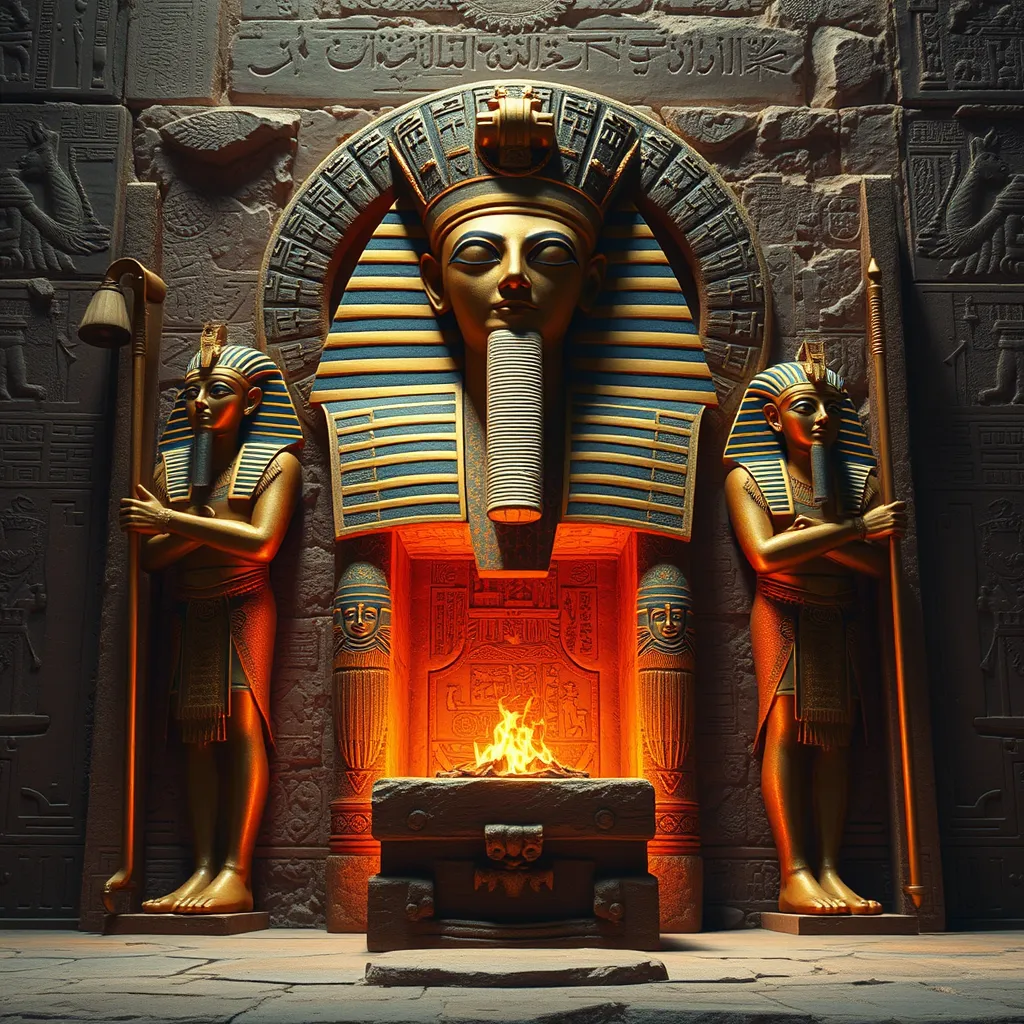The Quest for Immortality: The Ancient Egyptian Belief in the Afterlife and their Efforts to Achieve Eternal Life
I. Introduction
Immortality, in the context of ancient Egypt, is defined as the continuation of existence after death, a state wherein the soul transcends the physical realm to dwell in an eternal paradise. The significance of the afterlife in Egyptian culture cannot be overstated; it was central to their worldview and influenced their art, architecture, and daily practices.
This article aims to explore the intricate beliefs and practices related to immortality that defined ancient Egyptian civilization, shedding light on how these notions shaped their way of life and their understanding of existence.
II. Historical Context of Ancient Egyptian Beliefs
The ancient Egyptian civilization, one of the earliest and most influential cultures in history, thrived along the Nile River from approximately 3100 BCE until the conquest by Alexander the Great in 332 BCE. This civilization was marked by remarkable achievements in architecture, art, and governance.
Religious beliefs were deeply intertwined with daily life, with numerous deities governing various aspects of existence. Key deities related to the afterlife included:
- Osiris: God of the afterlife, resurrection, and regeneration.
- Isis: Protector of the dead and goddess of magic.
- Anubis: Deity associated with mummification and the afterlife.
Pharaohs were believed to be divine and held a special status; upon death, they were thought to become gods themselves, ensuring that their subjects followed their beliefs in the afterlife.
III. The Concept of the Afterlife in Ancient Egypt
The ancient Egyptians envisioned a complex afterlife realm, primarily represented by Duat, the underworld, and the Field of Reeds, a paradise akin to the earthly life. The journey of the soul after death involved navigating through various challenges in Duat before reaching the Field of Reeds.
Central to this journey was the judgment process known as the Weighing of the Heart. In this ritual:
- The deceased’s heart was weighed against the feather of Ma’at, the goddess of truth and justice.
- If the heart was lighter than the feather, the soul was deemed worthy and could enter the Field of Reeds.
- If it was heavier, the soul faced annihilation by the monstrous Ammit.
IV. Burial Practices and Funerary Rituals
Burial practices were vital for ensuring a successful journey to the afterlife. Mummification emerged as a crucial ritual, aimed at preserving the body for eternity. This process involved:
- Removing internal organs (except the heart) and desiccating the body with natron.
- Wrapping the body in linen and placing it in a sarcophagus.
Grave goods and offerings were also significant, as they were believed to provide for the deceased in the afterlife. Common items included:
- Food and drink for sustenance.
- Jewelry and personal items for comfort.
- Statues of servants to assist in the afterlife.
Architectural structures such as pyramids and tombs served as gateways to immortality, designed to protect the body and the offerings from robbers and the elements.
V. Texts and Artifacts Reflecting the Belief in Immortality
Numerous texts and artifacts illuminate the ancient Egyptians’ belief in immortality. The Book of the Dead, a compilation of spells and prayers, was specifically designed to guide the deceased through the afterlife. Similarly, the Pyramid Texts, inscribed within the pyramids, served to aid the pharaohs in their journey.
Symbolism in art and artifacts also played a crucial role. Common symbols included:
- The ankh, representing life.
- The scarab beetle, symbolizing resurrection.
- The Eye of Horus, signifying protection and good health.
Spells and inscriptions were meticulously crafted to ensure safe passage to the afterlife, reflecting the Egyptians’ deep reverence for the mystical.
VI. The Role of Magic and Rituals in Achieving Immortality
Magic was integral to ancient Egyptian religion, believed to hold the power to influence the divine and the supernatural. Rituals performed for the deceased were designed to aid their journey through the afterlife. These rituals included:
- Offering prayers and incantations to deities.
- Performing rites to ensure the deceased’s protection.
- Celebrating festivals in honor of the dead to maintain their presence in the living world.
The interaction between the living and the dead was characterized by rituals that sought to honor ancestors and invite their blessings, emphasizing the connection between the two worlds.
VII. The Legacy of Ancient Egyptian Beliefs on Modern Concepts of Afterlife
The ancient Egyptian beliefs significantly influenced later cultures and religions. Concepts of judgment after death, the soul’s journey, and the importance of burial practices can be seen in various religious traditions that followed.
Contemporary society continues to be fascinated by ancient Egyptian practices, with a resurgence in interest in their art, architecture, and spiritual beliefs. Museums, literature, and films often explore themes of immortality and the afterlife inspired by Egyptian mythology.
The ancient quest for immortality remains relevant in modern discussions about life, death, and what lies beyond, prompting individuals to reflect on their own beliefs regarding existence and continuity.
VIII. Conclusion
In summary, the ancient Egyptians’ quest for immortality was a profound aspect of their culture, shaping their beliefs, practices, and worldview. The meticulous rituals, rich mythology, and enduring artifacts reflect an enduring human desire for eternal life.
Ultimately, these beliefs offer valuable insights into our understanding of existence and mortality, reminding us of the universal quest across cultures to find meaning in life and death.




